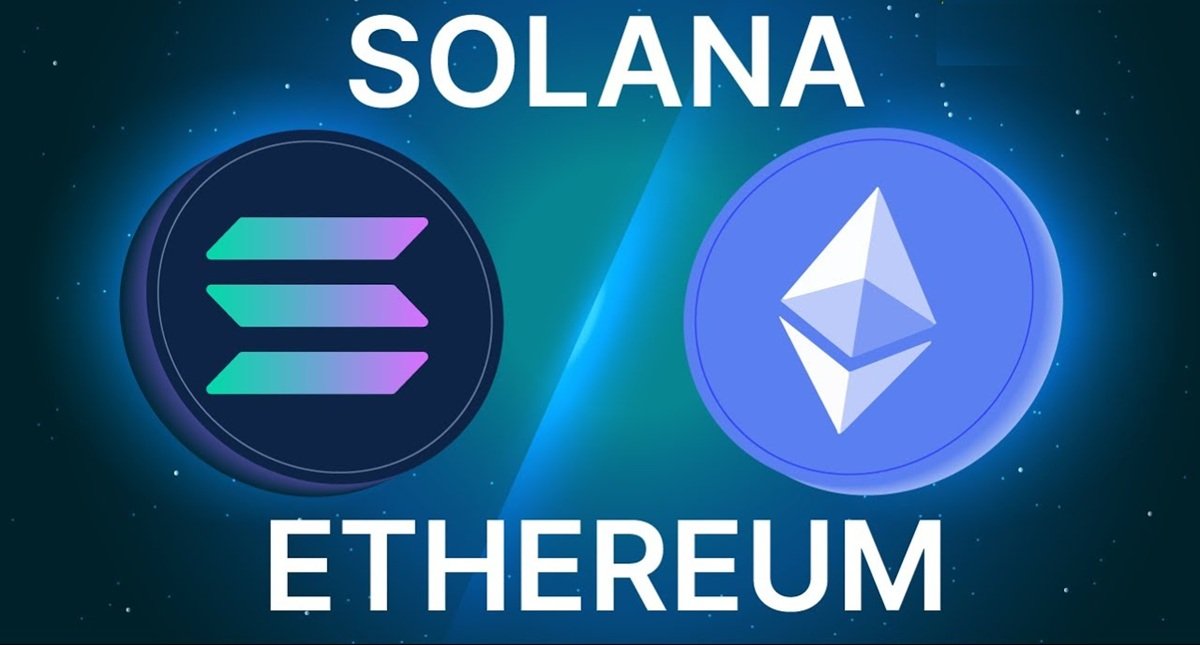The battle between Ethereum and Solana is heating up, and if you’re into crypto, you’ve probably asked yourself: which blockchain will come out on top by 2025? While Ethereum has long been the go-to smart contract platform, Solana has been making waves with its high-speed transactions and low fees. Let’s break it down and see which one might take the crown.
Ethereum: The OG Smart Contract Platform
Ethereum has been around since 2015 and has established itself as the backbone of decentralized applications (dApps) and DeFi projects. It introduced smart contracts to the world, allowing developers to build applications without a central authority.
Strengths of Ethereum:
- Security & Decentralization – Ethereum is one of the most secure and decentralized networks, making it a preferred choice for serious projects.
- Network Effect – Most dApps, DeFi projects, and NFT marketplaces are built on Ethereum, giving it a significant first-mover advantage.
- Ethereum 2.0 – With the transition to a Proof-of-Stake (PoS) model, Ethereum has improved its scalability and energy efficiency.
Ethereum’s Challenges:
- High Gas Fees – Ethereum’s biggest downside has been its expensive transaction fees.
- Scalability Issues – Even with Ethereum 2.0, transactions can still be slow compared to newer blockchains.
Solana: The Fast & Affordable Contender
Solana, launched in 2020, has quickly gained traction due to its high-speed transactions and low fees. It uses a unique Proof-of-History (PoH) consensus mechanism, which allows it to process up to 65,000 transactions per second (TPS), compared to Ethereum’s 15-30 TPS.
Strengths of Solana:
- Speed & Low Fees – Solana’s transaction costs are fractions of a cent, making it ideal for microtransactions and high-frequency trading.
- Developer-Friendly – It’s easy to build on Solana, attracting more projects looking for efficiency.
- NFT & Gaming Boom – Solana has become a popular blockchain for NFT and gaming projects due to its high-speed capabilities.
Solana’s Challenges:
- Network Outages – Solana has faced multiple outages, raising concerns about its reliability.
- Decentralization Concerns – Compared to Ethereum, Solana has a smaller number of validators, making it slightly more centralized.
Real-Life Use Cases & Adoption
Ethereum is home to major DeFi projects like Uniswap, Aave, and MakerDAO, while Solana has gained traction with projects like Magic Eden (NFTs) and Serum (DeFi exchange). If you’ve ever tried buying an NFT on OpenSea with Ethereum and paid ridiculous gas fees, you know the pain. On Solana, that same transaction would cost just pennies.
A friend of mine, an artist, once shared how they struggled with Ethereum’s gas fees when selling NFTs. Switching to Solana made it much easier for them to sell their art without pricing out buyers. Stories like this highlight why newer blockchains are gaining traction.
The Verdict: Who Wins in 2025?
Honestly, it’s not a clear-cut answer. If Ethereum continues to improve scalability and reduce gas fees, it will remain dominant due to its security and network effect. However, if Solana can fix its reliability issues and maintain its speed advantage, it could capture a significant share of the market.
The real winner? The users. More competition means better technology, lower fees, and more innovation. Whether you’re investing, developing, or just watching from the sidelines, 2025 is shaping up to be an exciting year for blockchain technology.
What do you think? Will Ethereum keep its throne, or will Solana speed past it? Let’s discuss!

